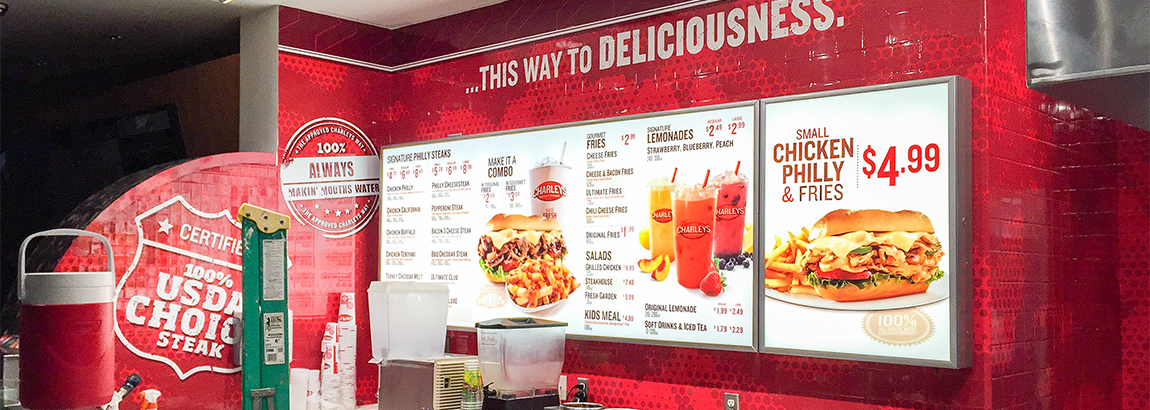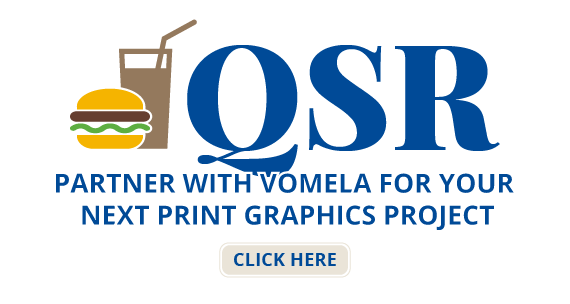
Creating Cost-Effective Experiential Decor for Restaurants
Tuesday , 06 August 2019 | quick service restaurant
It’s not just the food that impacts customer experience in quick service restaurant (QSR) establishments. Design plays a major role in the overall atmosphere, customer perspectives, and the likelihood they will return for another bite to eat. To help improve the likelihood of turning a quick stop customer into a lifelong fan, QSR design is going through major shifts and upping its game from low-cost, low-quality design to medium-cost options that enhance the customer experience. Learn what some of those shifts are, how design impacts the customer’s time in your establishment, and how to get design dollars in your budget.
A New Day in the Kitchen Calls for Improved QSR Design
QSR establishments have a great opportunity to elevate their design from the low consumer expectations of the last couple decades (picture any fast food joint from the early 2000s and you get the picture). This transition is one from low-cost, low-quality design elements to medium-cost, experiential decor that enhances the customer experience. What are the differences between the two?
Low-Cost Design Elements:
- Wallpaper, cardstock: These materials grow flimsy over time and are easily damaged from the get-go. There are cases when these materials can be used temporarily, but remember that using them can incur more costs over time.
- Outdated design: Retro design and a rundown look are not one and the same. Trends change seasonally, so be sure your design team is ahead of the game on new designs.
- Graphics that have been pushed beyond their intended lifetime: Graphics help your business pop, make it memorable, and become focal interest points for hungry people waiting in line. Make sure they don’t leave a bad taste in anyone’s mouth before they’ve gotten their food.
Medium-Cost, Experiential Design Elements:
- Vinyl with easy-to-clean coatings: These will need to be replaced at some point, but they last much longer and are more versatile than wallpaper, especially with food involved. Vinyl can also be used on variety of surfaces, such as windows, walls, and floors.
- Domed Vinyl: Intricate or typically expensive design elements can be mimicked with domed vinyl to give it a three-dimensional look and feel similar to tile, for example. This helps you save room in your design budget for other critical features.
- Printed fabric: A subtle fabric print can add a bit of interest to seating options around the establishment. The high-quality material exudes quality, and it's very easy to install.
- Interchangeable metal signage systems/POP signage: Permanent graphic installations can seem like a cost-saving option at the time of purchase, but design trends change quite quickly. Ensure you have the flexibility to swap out engaging graphics for customers as they wait in line for their orders.
Why Do Print Graphics Matter for QSR Establishments?
Now, it’s easy to wonder why you should spend a bit more of your budget on the print graphics and atmosphere of your QSR establishment. People are there for the food, right? That’s not the whole story.
Think of a time when the food you were given at a restaurant was sub-par. Was the atmosphere pleasant or unpleasant? Most often, restaurants with a pleasing atmosphere will bring you back to try another dish if your choice wasn’t too great the first time, as opposed to QSR establishments with bad food and poor design to match. Design highly influences customer attitude, and that makes updating your QSR design to include medium-cost, experiential elements even more critical.
Remember, food presentation is everything; excellent food photography on the menus or the walls is meaningless if the printed graphics don’t convey the appeal properly. By hiring print experts, you can correctly select the perfect substrate and coating for any environment or lighting.
Getting Budget for the Design Bill
Taking on a redesigning task or updating a venue is a heavy lift for QSR companies, especially smaller chains. The best way to ensure you gain enough budget dollars for design from decision-makers is to help them understand that redesigns don’t happen overnight.
If the business and marketing teams are already behind the times on print graphics and decor trends, you’re actually months behind the competition, even if you start the process today. The key is to plan ahead so your design venture is anticipatory, not reactionary. Stay up-to-date with design trends by visiting other popular QSR establishments, reading design articles, or subscribing to a print design and graphics newsletter.
It Pays to Promote Your QSR Redesign
Depending on your brand and marketing style, promotion of your QSR interior redesign is absolutely an option. If, for example, your restaurant has gotten some less-than-positive press in recent years, a store graphic redesign, including refreshed print graphics, symbolizes a ‘fresh start’, allowing customers to see your QSR is moving toward bigger and better things. A redesign is the physical manifestation of positive change, after all.
Take Your QSR Design to the Next Level
In a saturated market, it’s critical to make a name for your business and stay ahead of the game when it comes to design. A customer might have chosen the wrong dish for their taste, but a tasteful interior decor with appealing print graphics can bring them back for a second meal down the road. By updating your decor to include medium-cost, experiential print graphics elements rather than low-cost, low-quality details, you can enhance the customer experience for years to come.
Aug 06, 2019 |
Topics: quick service restaurant

